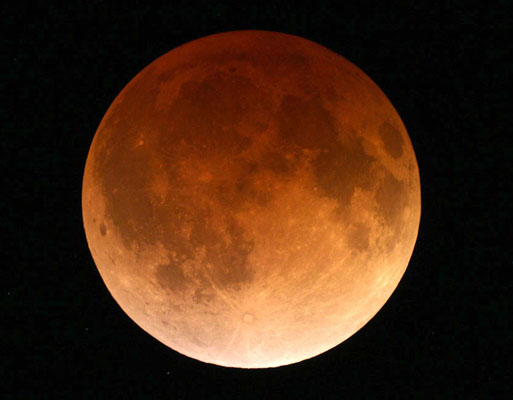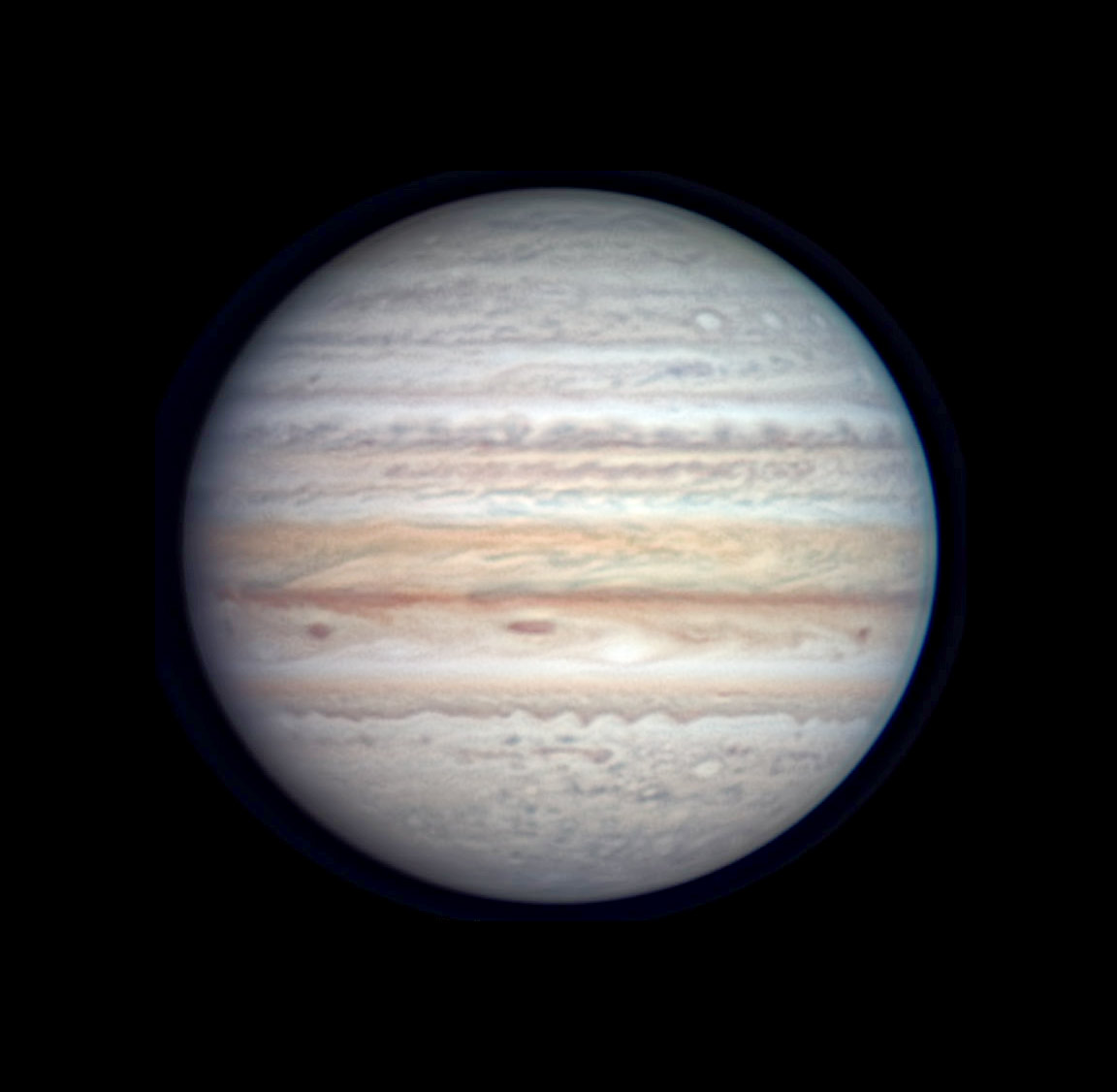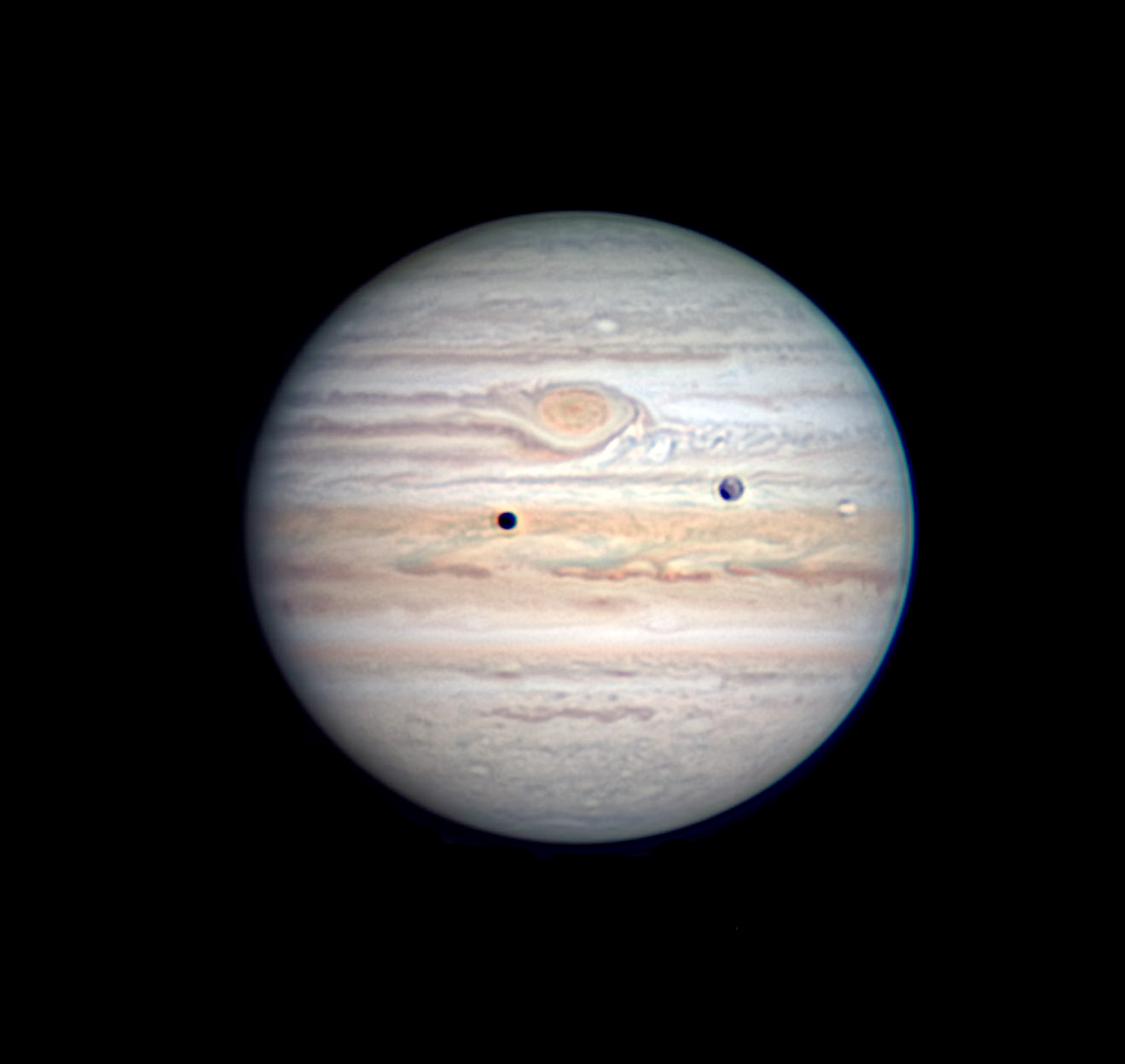Nova Cassiopeiae, continued: After erupting to about magnitude 7.7 around March 19th, Nova Cas remained about mag 7.5 or 8 for two months, then shot up to 5.4 around May 8th, making it faintly visible to the naked eye in a dark sky. "This morning Nova Cas was an easy naked-eye object of about magnitude 5.2 just before morning twilight began," wrote S&T columnist Alan Whitman on May 11th from British Columbia. "This is only the third naked-eye nova that I have seen."
But after about five days it faded back down. As of May 25th it was again magnitude 7.7 and holding. Why all this? Spectral details offer clues.
The nova is fairly low in the north-northeast in the evening, depending on your latitude, but high in the northeast before the first beginnings of dawn.
FRIDAY, MAY 21
■ Find Mercury and Venus low in the west-northwest in twilight. The first you'll spot is Venus, bright at magnitude –3.9. As the sky darkens further, Mercury will come into view above or upper right of it. They close in on each other fast: from 6.5° apart this evening to 0.4° apart at their conjunction a week from now.
But Mercury is fading! —from magnitude 1.1 to 2.3 this week. Bring binoculars.
Meanwhile, little Mars remains in the evening sky well to their upper left, below Pollux and Castor. It's only magnitude 1.8, about Castor's equal.
■ After dark, the waxing gibbous Moon shines in the dim head of Virgo. Look for Denebola, tail tip of Leo, about a fist at arm's length to the Moon's upper right. Twice as far to the Moon's lower left you'll find Spica.
SATURDAY, MAY 22
■ Spica shines one fist lower left of the Moon this evening. Three times as far to their upper left is brighter Arcturus.
■ Summer is still a month off, but the Summer Triangle is beginning to dominate the east. Its top star is Vega, the brightest. You can't miss it well up in the in the east-northeast after dark. Its faint little constellation Lyra dangles down from it with its bottom canted to the right. Lyra's main stars form a little equilateral triangle (Vega is one corner) with a tall parallelogram attached to the triangle's bottom star.
Dimmer Deneb shines lower left of Vega by a little more than two fists at arm's length.
The third corner of the Summer Triangle is Altair. It rises in the east, far to the lower right of Vega and Altair, soon after the night is fully dark.
SUNDAY, MAY 23
■ Now, find Spica less than a fist to the Moon's right.
MONDAY, MAY 24
■ What is the oldest thing you have ever seen? Everyone in the world can see at least the Sun and other objects of the solar system, age 4.6 billion years. Everything on or near Earth's surface is much younger.
Next is Arcturus, which most people have surely seen whether they knew it or not, since it's one of the brightest stars in the sky. It's a Population II orange giant, age about 7 billion years. These evenings it looks down on you from very high toward the south, more or less overhead depending on your latitude.
Amateur astronomers have globular clusters. Most are older still, at least in part. White dwarfs in the familiar M4 in Scorpius have been dated at 12.7 ±0.7 billion years.
But individual stars that you can observe? For that you want Bob King's article In Search of Ancient Suns, with finder charts. Assigning dates to individual stars from the first eras after the Big Bang is still iffy; astronomers have to work from the near-absence of heavy elements in their spectra. But a relatively nearby 6th-magnitude star in Bootes and a 7th-magnitude star in Libra, both in binocular range, await you these evenings. They probably date from, respectively, about 12½ billion and at least 13 billion years ago. These will probably be the oldest things you have ever seen, or will. The Big Bang itself is well dated at 13.8 billion years.
One could pick nits. Pick a proton, any proton right in front of you, and it has very likely remained intact since the Big Bang's first millionth of a second. What a variegated history it has seen since then!
TUESDAY, MAY 25
■ Full Moon tonight (exact at 7:14 a.m. EDT tomorrow morning the 26th), with a barely total eclipse of the Moon for the Pacific Ocean and its adjacent lands.
At least some of the eclipse will be visible from western North America just before and/or during dawn Wednesday morning the 26th. For Australia and eastern Asia, at least some of the eclipse will be visible during and/or after dusk on the evening of the 26th local date.
The best place to be is in between in Hawai`i, where the eclipsed Moon will hang high in the middle of the night. Mid-eclipse is at 11:19 UT May 26th.
As for the background scenery? The Moon is among the rather dramatic stars of upper Scorpius.

Find out the eclipse situation where you live, and get ready, with Dawn Delight: Catch the Total Lunar Eclipse on May 26th with maps and illustrations.
And by the way, this full Moon is a "supermoon," meaning the Moon is near perigee and very slightly closer than average. In fact this is the largest supermoon of 2021 (by a tiny trace).
A live feed of the eclipse from Gianluca Masi begins at 10:00 UT May 26 (6:00 a.m. EDT, 3:00 a.m. PDT).
WEDNESDAY, MAY 26
■ Now, a day later, look for Antares less than a fist to the right of the Moon after dark. Orange Antares is the brightest and most colorful star of upper Scorpius.
THURSDAY, MAY 27
■ Spot Vega, the brightest star in the east, pale blue-white. Look upper left of it by 14° (about a fist and a half at arm's length) for orange Eltanin, the 2nd-magnitude nose of Draco the Dragon. Closer above and upper left of Eltanin are the three fainter stars forming the rest of Draco's stick-figure head, also called the Lozenge. Binoculars will help bring them out of the moonlight. Draco always points his nose to Vega. He seems curious about it.
The faintest star of Draco's head, opposite Eltanin, is Nu Draconis. It's a fine, equal-brightness double star for binoculars (separation 61 arcseconds, both magnitude 4.9). The pair is 99 light-years away. Both are hot, chemically peculiar type-Am stars larger, hotter, and more massive than the Sun.
FRIDAY, MAY 28
■ We're in the time of year when Leo the Lion walks downward toward the west, on his way to departing into the sunset in early summer. Right after dark, spot the brightest star fairly high in the west-southwest. That's Regulus, his forefoot.
SATURDAY, MAY 29
■ Bright Capella sets low in the northwest fairly soon after dark these evenings (depending on your latitude). That leaves Vega and Arcturus as the brightest stars in the evening sky. Vega shines in the east-northeast. Arcturus is very high toward the south.
A third of the way from Arcturus down to Vega, look for semicircular Corona Borealis, with 2nd-magnitude Alphecca as its one moderately bright star.
Two thirds of the way from Arcturus to Vega is the dim Keystone of Hercules, now lying almost level. Use binoculars or a telescope to examine the Keystone's top edge. A third of the way from its left end to the right is 6th-magnitude M13, one of Hercules's two great globular star clusters. In binoculars it's a tiny glowing cottonball. A 4- or 6-inch scope begins to resolve some of its speckliness. Located 22,000 light-years away far above the plane of the Milky Way, it consists of several hundred thousand stars in a swarm about 140 light-years wide.
This Week's Planet Roundup
Mercury and Venus come into view in the west-northwest in the afterglow of sunset. You may first spot Venus, bright at magnitude –3.9, very low. Look about 40 minutes after sundown. As the sky darkens, fainter Mercury emerges above it or upper left of it.
The two planets close in on each other day by day; as Venus climbs, Mercury settles lower. Their separation shrinks from 6.5° on Friday May 21st to 0.4° at their conjunction a week later on the 28th.
But Mercury is fading fast: from magnitude 1.1 to 2.3 during this time. So bring binoculars.
Mars (magnitude 1.7, in central Gemini) glows in the west right after dark. A few finger-widths above it are Pollux and Castor. Mars, being on the far side of its orbit from us, is no brighter than even Castor, the fainter of the Pollux-and-Castor "twins." Don't expect anything in a telescope; Mars is a mere 4.3 arcseconds wide, just a tiny blob.
Jupiter and Saturn (in dim Aquarius and Capricornus, respectively) catch the eye in the southeast before the first light of dawn. Jupiter grabs attention at magnitude –2.4. Saturn, 18° to Jupiter's right, is more modest at magnitude +0.6.


Note the dark line now nearly encircling the Red Spot Hollow. It looks like a continuation of the two dark bands at left; the whole thing has taken on the "snake head" pattern we've seen before. The Red Spot is the snake's enormous eye. His nose points right (toward celestial east; following).
Don't get too excited; Jupiter shows nowhere near this level of detail visually, especially from latitudes higher than Go's near-equatorial 10° N. For those of us less ideally placed, Jupiter is still fairly low in poor telescopic seeing even as dawn gets under way.
Uranus is hidden in the glow of dawn.
Neptune, in Aquarius 20° east of Jupiter, lurks low in the east-southeast just before dawn begins.
All descriptions that relate to your horizon — including the words up, down, right, and left — are written for the world's mid-northern latitudes. Descriptions that also depend on longitude (mainly Moon positions) are for North America.
Eastern Daylight Time, EDT, is Universal Time minus 4 hours. Universal Time is also known as UT, UTC, GMT, or Z time. To become more expert about time systems than 99% of the people you'll ever meet, see our compact article Time and the Amateur Astronomer.
Want to become a better astronomer? Learn your way around the constellations. They're the key to locating everything fainter and deeper to hunt with binoculars or a telescope.
This is an outdoor nature hobby. For an easy-to-use constellation guide covering the whole evening sky, use the big monthly map in the center of each issue of Sky & Telescope, the essential magazine of astronomy.
Once you get a telescope, to put it to good use you'll need a detailed, large-scale sky atlas (set of charts). The basic standard is the Pocket Sky Atlas (in either the original or Jumbo Edition), which shows stars to magnitude 7.6.

Next up is the larger and deeper Sky Atlas 2000.0, plotting stars to magnitude 8.5; nearly three times as many. The next up, once you know your way around, are the even larger Interstellarum atlas (stars to magnitude 9.5) or Uranometria 2000.0 (stars to magnitude 9.75). And be sure to read how to use sky charts with a telescope.
You'll also want a good deep-sky guidebook, such as Sky Atlas 2000.0 Companion by Strong and Sinnott, or the bigger (and illustrated) Night Sky Observer's Guide by Kepple and Sanner.
Can a computerized telescope replace charts? Not for beginners, I don't think, and not on mounts and tripods that are less than top-quality mechanically, meaning heavy and expensive. And as Terence Dickinson and Alan Dyer say in their Backyard Astronomer's Guide, "A full appreciation of the universe cannot come without developing the skills to find things in the sky and understanding how the sky works. This knowledge comes only by spending time under the stars with star maps in hand."
![]() Audio sky tour. Out under the evening sky with your
Audio sky tour. Out under the evening sky with your
earbuds in place, listen to Kelly Beatty's monthly
podcast tour of the heavens above. It's free.
"The dangers of not thinking clearly are much greater now than ever before. It's not that there's something new in our way of thinking, it's that credulous and confused thinking can be much more lethal in ways it was never before."
— Carl Sagan, 1996
"Facts are stubborn things."
— John Adams, 1770
 1
1









Comments
Glenn
May 23, 2021 at 8:16 pm
Totality in Hawaii at 1.19 am verses 9.19 pm for me. I'll take my timezone for this one LOL. With an umbral magnitude of 1.0095 the northern limb will be barely inside the umbra and so be quite bright. Clear skies to all.
You must be logged in to post a comment.
You must be logged in to post a comment.